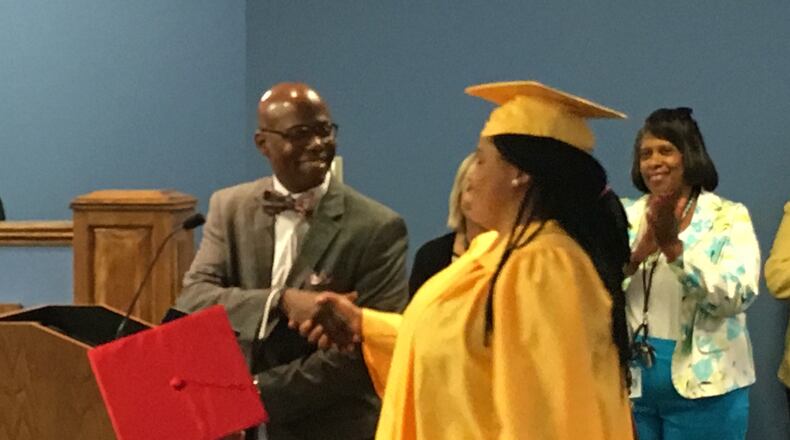And no matter what pathway they use, students still need to earn at least 20 credits from passing their classes, as they have in past years.
RELATED: Governor, legislature approve graduation changes
Ohio Department of Education senior director of accountability Chris Woolard estimated that another 19 percent of seniors are “highly likely” to meet test score requirements this year, based on their scores so far.
If that estimate is accurate, it would mean 77 percent are “on track” to meet the testing part of the graduation requirements, either via the state end-of-course exams or a remediation-free score on the ACT or SAT.
“This is up by approximately 10 percent from last fall and shows that our schools and students are working hard to meet the requirements,” ODE spokeswoman Brittany Halpin said.
EARLIER: Panel suggested diploma pathway without tests
That 77 percent would not be far behind Ohio’s existing high school graduation rate, which has climbed slowly from 82.2 percent to 83.5 percent over the past four years, when the easier Ohio Graduation Test was the standard used.
Woolard emphasized that in addition to the 77 percent estimate, there are other students who may be on track to the workforce graduation pathway, or may be exempt from testing requirements because of certain special education status, and thus eligible to graduate. That data has not yet been analyzed.
The Class of 2018 is the first group governed by new, harder, Common Core-based end-of-course exams. There are seven high school tests in math, English, science and social studies, with students needing 18 of 35 possible points for graduation.
RELATED: How did your schools do on the state report card?
Last year, amid worries that tens of thousands of students wouldn’t pass those tests, the state board and legislature softened standards for current seniors only, adding the 93 percent attendance, 2.5 GPA, 120 work/volunteer hours and other pathways to a diploma.
State officials are expected to debate in the coming months whether to extend those options to the Class of 2019 and beyond, or create some hybrid system. According to ODE, the current junior class has about 1 percent fewer students “on-track” to graduate as the Class of 2018 had at this time last year.
There is some question about the state’s estimate that another 19 percent of seniors are “highly likely” to meet the bar of 18 points on state tests later this year. Of the 10 percentage-point improvement Halpin mentioned, only five points of that came from improvement on state tests. The rest were students who earned remediation-free scores on the ACT or SAT.
RELATED: School leaders aim to close racial achievement gap
The question is whether a 19-point surge is likely this year, after a smaller increase last year. ODE data shows that about 1 in 3 students who scored low on a state test the first time improved their score on a retake.
But Woolard said retakes are not the only factor, as nearly 20,000 seniors have only taken five of the seven state tests.
“There are a lot of kids who still haven’t taken the government test,” because their schools kept it as a senior year class, Woolard said. “Students tend to do really well on it; we had 72 percent score proficient on that test. … Something like 40 percent still need government, so there’s a lot of points still on the table.”
VOTERS GUIDE: See DPS candidates’ answers on key questions
Local school districts varied widely in the percentage of seniors who had already met the graduation standard for test scores. The data followed familiar trends, with suburban high-income districts at the top, while charter schools and urban high-poverty districts were at the bottom.
In Springboro, Centerville and Mason, almost 90 percent of students had already met the testing standard, while Springfield and Middletown were near 43 percent, and Dayton was at 25 percent.
There were some schools that had a fairly low percentage of students that had already met the standard, but a high percentage deemed “on track” to do so by the end of the year. Southeastern schools near Springfield had only 43 percent already over the bar, but 91 percent on track. The Dayton Early College Academy charter school had 70 percent on track despite only 23 percent meeting the standard so far.
Dayton Public Schools (42.5 percent) and several charter schools below 40 percent had the lowest rate of students “on track” for graduation via test scores.
About the Author

